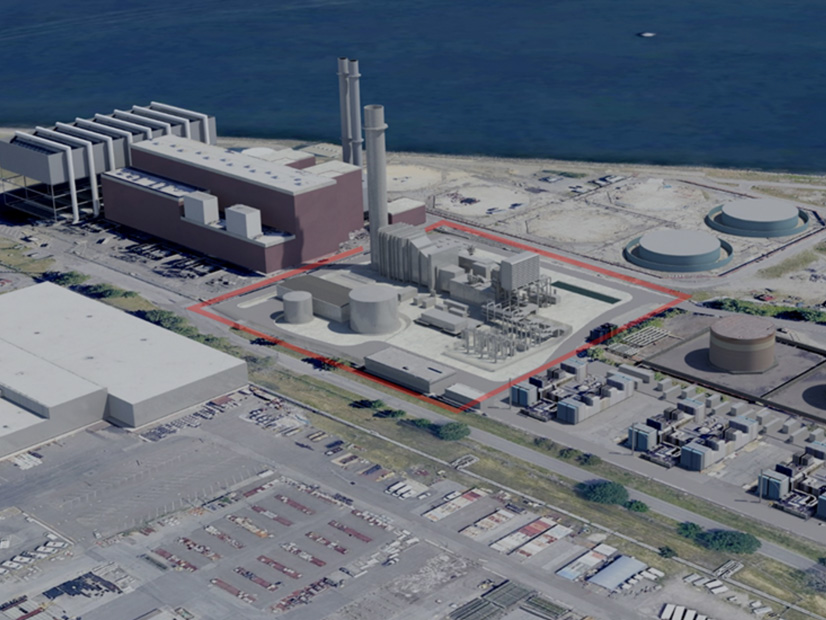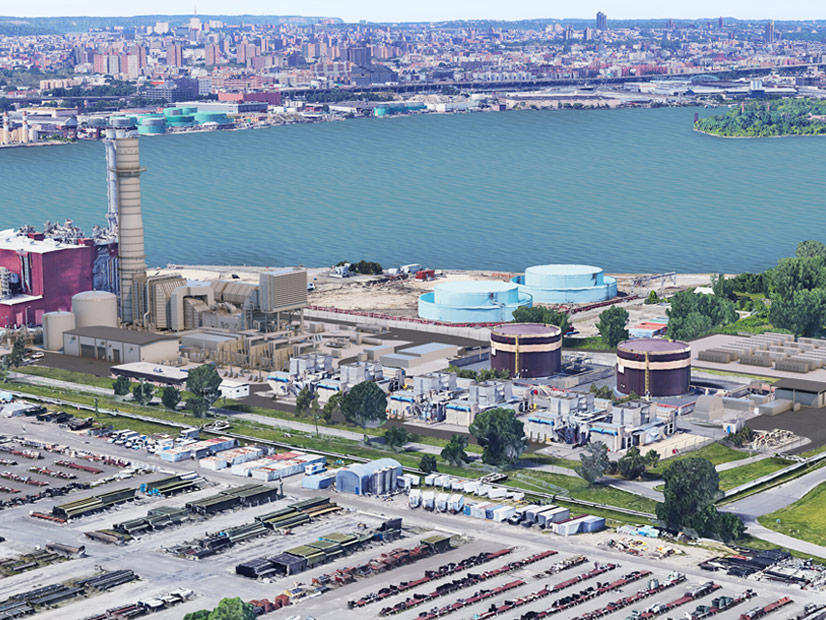Members of the public are questioning the necessity and safety of a plan to repower the Astoria natural gas generating facility in Queens, N.Y.
New Yorkers filed 66 separate comments to the Public Service Commission (PSC) by a Monday deadline, all opposing NRG Energy’s revised proposal for its 502-MW Astoria plant. The company proposed replacing the facility’s aging gas and oil-fired turbines with new simple-cycle, dual-fuel peaking turbines fully convertible to hydrogen fuel in the future (20-E-0441).
The PSC’s comment deadline applied to NRG’s request for a modified certificate of public convenience and necessity, based on a 1,040-MW proposal approved in 2010 but never built.
“Nearly a decade after Article 10 was enacted, a supplement to a decade-old environmental impact statement reviewing a completely different project is not sufficient to ensure to the public that this new facility is necessary, safe for the environment and residents of surrounding neighborhoods, and in the public interest,” said the PEAK Coalition, representing the New York City Environmental Justice Alliance, UPROSE, the Point CDC, Clean Energy Group, New York Lawyers for the Public Interest, Sierra Club and Earthjustice.
The state’s Department of Environmental Conservation (DEC), lead agency in the proceeding, on June 30 pronounced the company’s supplemental draft environmental impact statement (SDEIS) and other permit applications complete for the purposes of public review.
In June, DEC said it believes the proposed project would be inconsistent with statewide GHG-emission limits and requested comments on the project’s draft permits by Aug. 29. (See Proposed NatGas Plants ‘Appear’ Contrary to NY Law, Regulator Says.)
Project Need
NRG spokesman Dave Schrader told RTO Insider that “no combination of renewable technologies available today can, by themselves, reliably power Queens, let alone New York City.”
The project will address reliability needs, reduce electricity costs by more than $1.5 billion in just its first five years of operation, and provide critical black start capability required to restore service following a major power outage, he said.

The Astoria repowering “is estimated to reduce statewide GHG emissions by more than 5 million tons through 2035, and as a long duration backup/standby unit, the project facilitates the reliable interconnection of large amounts of intermittent renewable energy as required by the CLCPA,” Schrader said.
PSC Commissioner Diane Burman at a July 15 meeting said, “It’s a problem if we are being told, ‘say no to gas,’ despite what that means for customers, even if gas offsets much more carbon-intense fuels like oil and diesel.”
The environmentalists’ coalition said that the proposal’s reliance on a future conversion to hydrogen was unrealistic: “First, no commercially available turbines are currently rated to burn 100% hydrogen fuel; all require hydrogen to be blended with natural gas, and most have limits of about 30% hydrogen. … Second, when combusted in power plants, hydrogen presents a different set of environmental and safety concerns than gas, including highly concerning NOx emissions (up to six times those of methane) that have nowhere previously been analyzed.”
The Daily News on July 9 reported Senate Majority Leader Chuck Schumer joining local Queens politicians and activists opposing the plant.
Before the commission can consider this petition, NRG must go back to the Siting Board to seek a determination of whether the current Astoria replacement project is exempt from Article 10 review, the coalition said.
The existing facility has 31 peaking-only gas and oil-fired combustion turbines, including 24 Pratt & Whitney turbines and seven retired Westinghouse turbines, all dating from the early 1970s, which NRG proposes to replace with an efficient, quick start, fast-ramping General Electric H-Class 7HA.03 or equivalent unit that it estimates will reduce peak-day onsite emissions by 98% from current levels.
Risk Perceptions
Queens resident Sirina Nagi said she opposed the project on behalf of her 14-month-old son not so much to stop climate change but to avoid a climate catastrophe.
“Across the United States, people are suffering because our government is refusing to see the bigger picture and invest in our future,” Nagi said. “If my son is to have a future where he can enjoy nature or at the very least continue to inhabit this planet, we need to take our climate commitments seriously.”
Jack Lupo, a New Yorker born and raised in Queens, asked the commission “to oppose this proposed power plant because of the role it can play in making my city, my neighborhood, my home and my family less safe, less secure and less healthy.”
Dr. Sheela Maru, a doctor practicing in Queens and a resident of western Queens, said “I am concerned about immediate and long-term health effects for nearby communities. … Also, people who live in environmental justice communities are more likely to have health conditions that make extreme heat and polluted air from burning fossil fuels or from hydrogen more dangerous and even deadly.”
Rep. Alexandria Ocasio-Cortez (D-NY), whose district includes the plant site, in March sent a letter with nine other members of the state’s Democratic House delegation to Gov. Andrew M. Cuomo and the DEC urging them not to approve a new gas facility that would “degrade air quality in neighborhoods already ridden with toxic fossil fuel power plants and elevated levels of asthma.”


